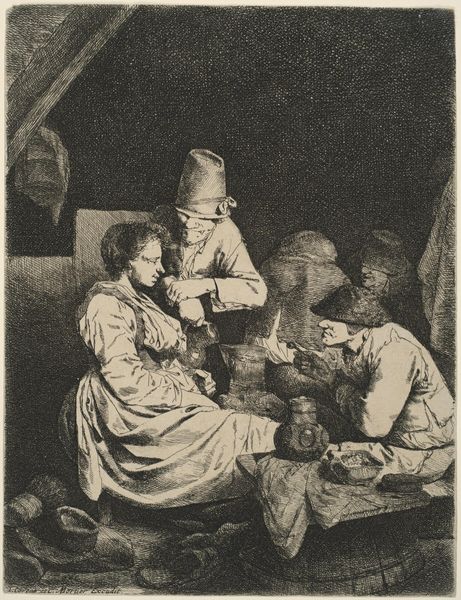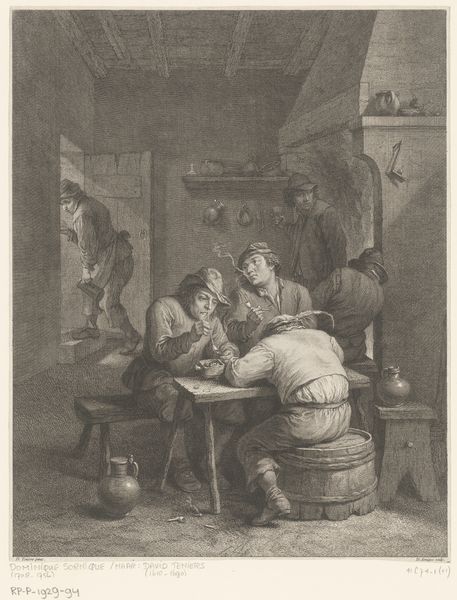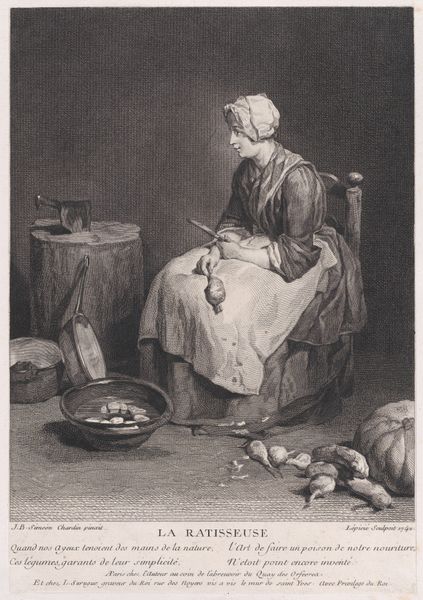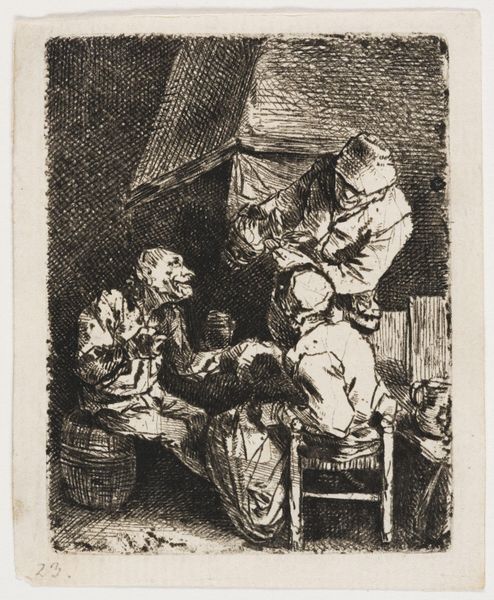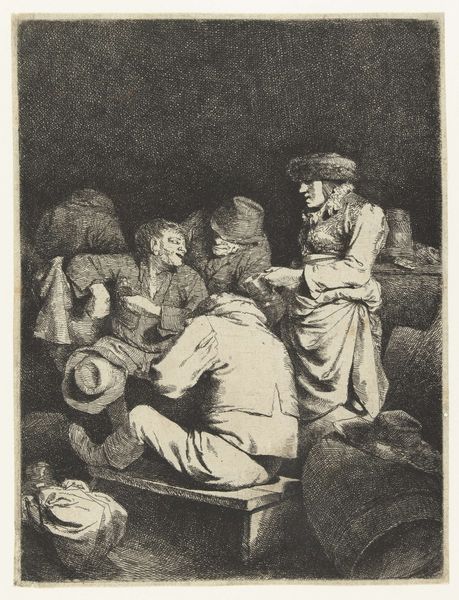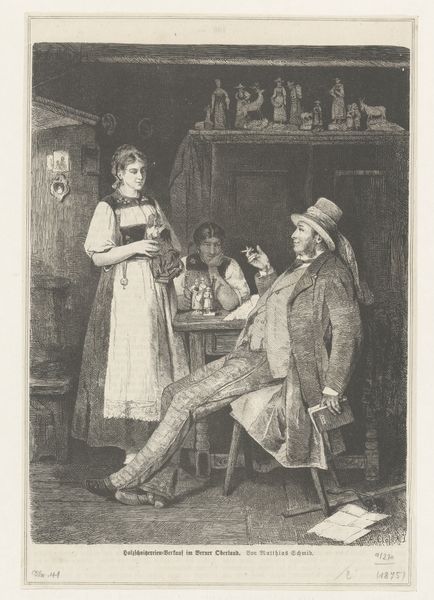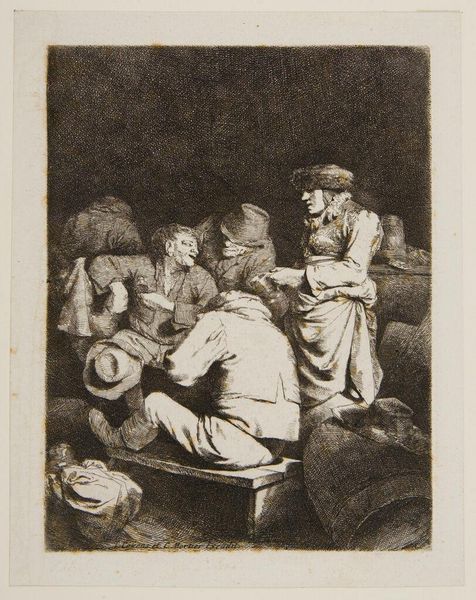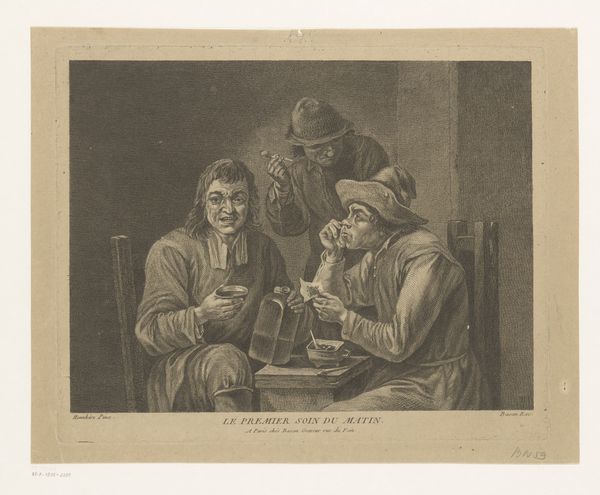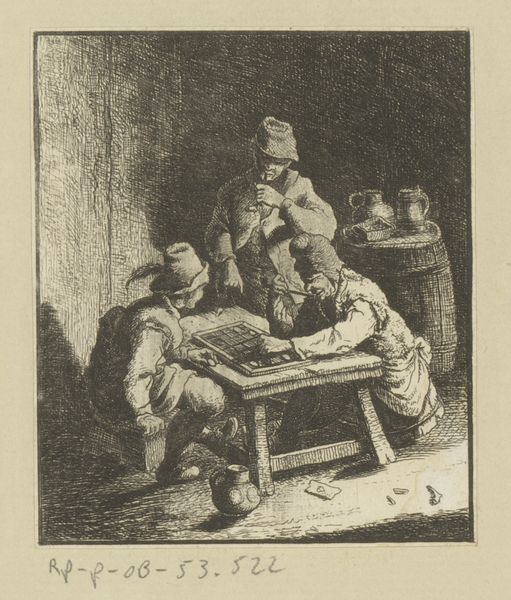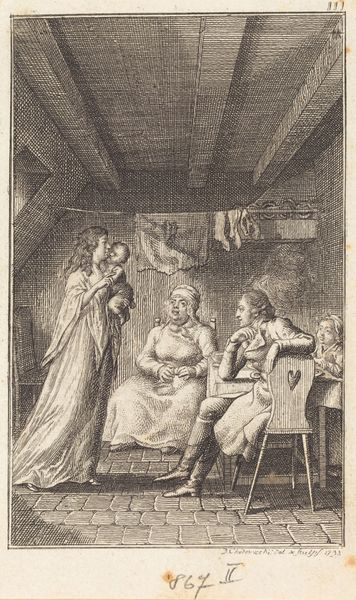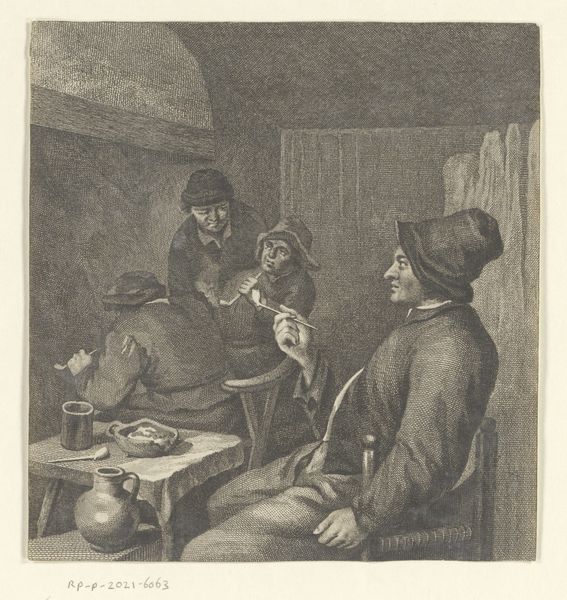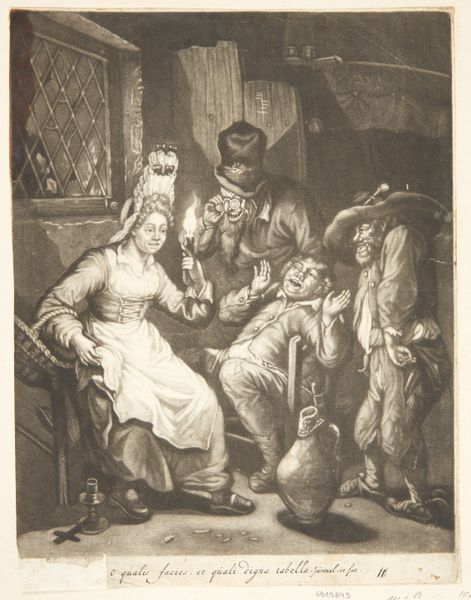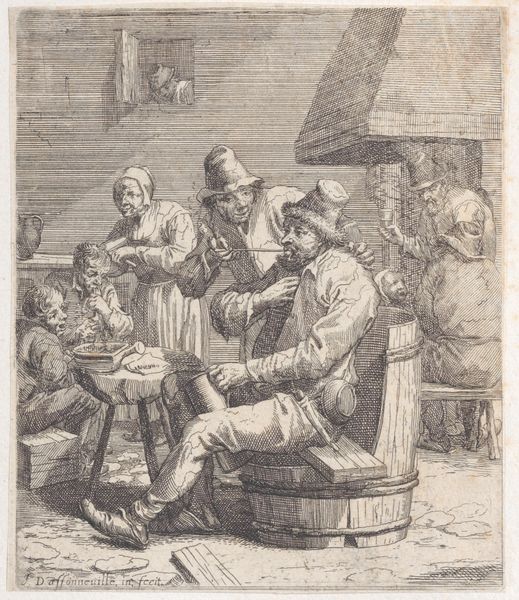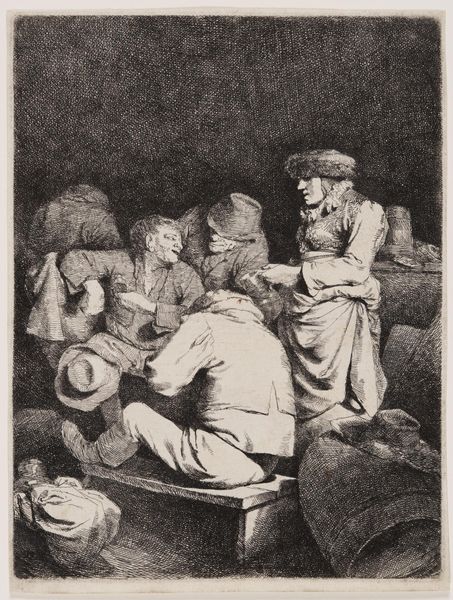
print, etching
#
dutch-golden-age
# print
#
etching
#
figuration
#
genre-painting
Copyright: National Gallery of Art: CC0 1.0
Editor: This etching is called "The Inn," created by Cornelis Bega during the Dutch Golden Age. I find its composition particularly striking; the tight grouping of figures against that very dark background creates such an intimate atmosphere. What is your interpretation? Curator: Consider first the relationship between light and shadow. Notice how the artist masterfully employs chiaroscuro to sculpt the forms, directing our gaze? The sharp contrast accentuates the subjects, doesn’t it? Editor: Yes, the dramatic lighting really pulls your eyes towards the faces. The light seems to be strategically used to tell the story within the composition itself. Is that typical of Bega's approach to printmaking? Curator: Quite so! But how do you see that compositional arrangement shaping our interpretation of their relationship? Does their placement suggest something beyond the immediately visible narrative? What emotional cues are we given beyond what can be obviously depicted? Editor: Hmm. Their positioning makes it seem like there are multiple narratives intersecting, especially in that cramped space. So much unspoken in the gaze of each subject. Curator: Precisely. It's Bega's masterful ability to convey narrative through formal elements—light, composition, and line—that truly elevates his prints. A formal examination yields emotional and relational insight. Editor: This was helpful! It definitely deepened my appreciation for how much can be said through pure compositional choices. Curator: Indeed. It reinforces the point that understanding an artwork starts with carefully analyzing what is presented to our eyes. A strong start for both of us!
Comments
No comments
Be the first to comment and join the conversation on the ultimate creative platform.
